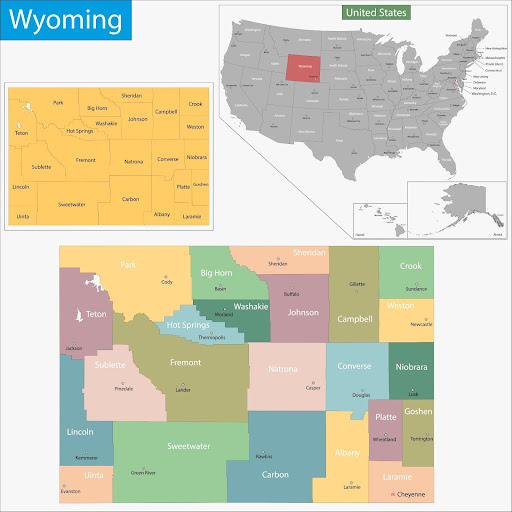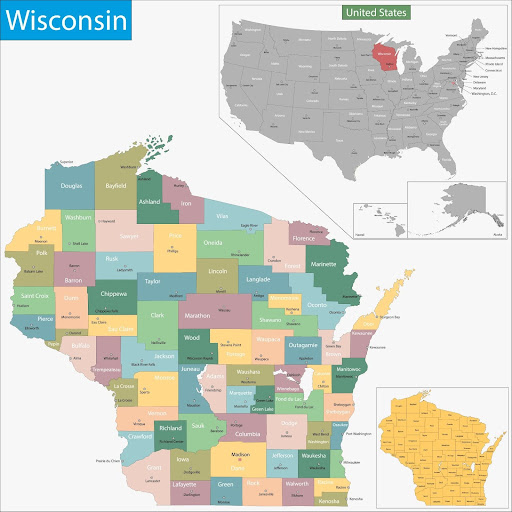For fire investigators, Wyoming presents a quiet kind of complexity. Fires can smolder for days in pine duff beneath standing beetle-kill before flaring with the next wind gust. Access roads might be nothing more than two-track trails on BLM land. And ignition sources span a wide behavioral spectrum.
This guide gives you the lay of the land when it comes to wildland fire resources in Wyoming. From who to call and where to train, to how fire behaves across this state's patchwork of terrain and ownership, you’ll find the essentials for navigating the field.
For more detail, visit our wildland firefighting resources page
Live Incident Updates & Maps
Track real-time fire activity and interagency incident reports across Wyoming using this tool:
State Overview
Wyoming is a mix of prairie flash fuels, lodgepole pine stands weakened by beetle kill, and steep terrain that can complicate suppression and cause-tracking. Fire behavior here isn’t just a regional issue—it’s a fuel mosaic challenge.
- High Plains (eastern WY): Fast-spreading grassfires. These are often human-caused—equipment sparks, fence line burns, or roadside ignitions.
- Bighorn Basin and Foothills: Complex elevation changes paired with cured sage and juniper can produce erratic behavior under red flag conditions.
- Mountain Forests (Wind River, Bighorn, Medicine Bow): Beetle kill has left millions of standing snags. Fires in these areas can burn deep and stand-replacing.
- WUI Pockets: Rapid expansion near Laramie, Sheridan, and Jackson has pushed housing into flammable terrain, raising the stakes for suppression and cause determination.
Wildfire Season Timeline
Wyoming's fire season is getting longer, but still follows a recognizable rhythm:
- Spring (April–June): Windy and dry. Human-caused grassfires dominate the landscape. Burn piles and open burning become common ignition sources.
- Summer (July–August): Peak fire season. Lightning-caused fires surge, especially in national forests and BLM lands. Investigators need to be ready for remote deployments.
- Fall (September–October): Cold fronts bring erratic winds. Late-season wildfires tend to creep along the forest floor before flaring in dry canopy layers.
Key State Agencies Involved
Wyoming fire management is highly decentralized, but the core players coordinate through interagency zones:
- Wyoming State Forestry Division (WSFD): Oversees wildland fire suppression on state and private land. Also handles fire training and equipment distribution to local VFDs.
- Wyoming Office of Homeland Security: Manages federal grants and fire mitigation funds. Partners with counties for pre-season coordination.
- U.S. Forest Service (USFS): Key federal player. Oversees major forests like Medicine Bow-Routt, Shoshone, and Bighorn. Investigations follow USFS LEI protocols.
- Bureau of Land Management (BLM): Manages over 18 million acres in Wyoming. Investigators often work alongside BLM’s fire operations and law enforcement.
- Tribal Authorities: The Wind River Reservation (Eastern Shoshone and Northern Arapaho) maintains its own fire programs. Cross-jurisdictional investigations are common.
Local Wildland Firefighting Resources
Wyoming relies heavily on local and rural departments for initial attack, especially in areas without federal presence.
- County fire wardens often double as wildfire investigators or liaisons.
- Local dispatch zones can involve multiple counties, especially in mutual aid areas.
- Red-carded volunteers are often the first on-scene and may provide key intel for origin investigators.
List of Local/State/Federal Fire Response Agencies
Here’s a breakdown of boots-on-the-ground assets investigators may work with:
Contact Numbers and Emergency Links
Training & Volunteering
Wildland fire training in Wyoming emphasizes operational readiness and interagency cooperation. Most programs follow NWCG standards.
NWCG-Approved Academies and Centers
Volunteer and Seasonal Training Opportunities
Stay Informed on Wyoming’s Wildland Fire Landscape
The fire environment here isn’t always flashy, but it’s changing. Drought cycles are getting tighter. Wind events are hitting harder. And new development is edging into sagebrush basins and ponderosa ridges.
If you're investigating wildland fire in Wyoming, assume you’re walking into a dynamic, layered system. Know the dispatch zone. Learn who has jurisdiction. And carry both a compass and a clear protocol chain, because cell reception won’t always help.
Keep up with legislative shifts, too. Wyoming’s fire suppression funding and local authority designations have evolved in recent years, affecting everything from burn permits to post-incident reporting.
FAQs
Who investigates wildfires in Wyoming?
Jurisdiction depends on land ownership. WSFD handles state and private lands unless delegated to county fire wardens. BLM or USFS handles federal lands. Complex fires often involve cross-agency teams.
Can I burn debris on my private land?
Only with permission. Most counties require burn permits and restrict open burning during red flag days. Check with your local fire warden or sheriff.
How do I become a wildland firefighter in Wyoming?
Apply for EFF positions through WSFD or county agencies. Training includes S-130/190, pack tests, and red card certification. Some counties offer junior programs and mentorship for new recruits.
What’s the most common ignition source in Wyoming?
Historically, human-caused ignitions lead the list, especially power lines, machinery sparks, and escaped burns. But lightning remains the biggest cause in remote forests during July–August.









